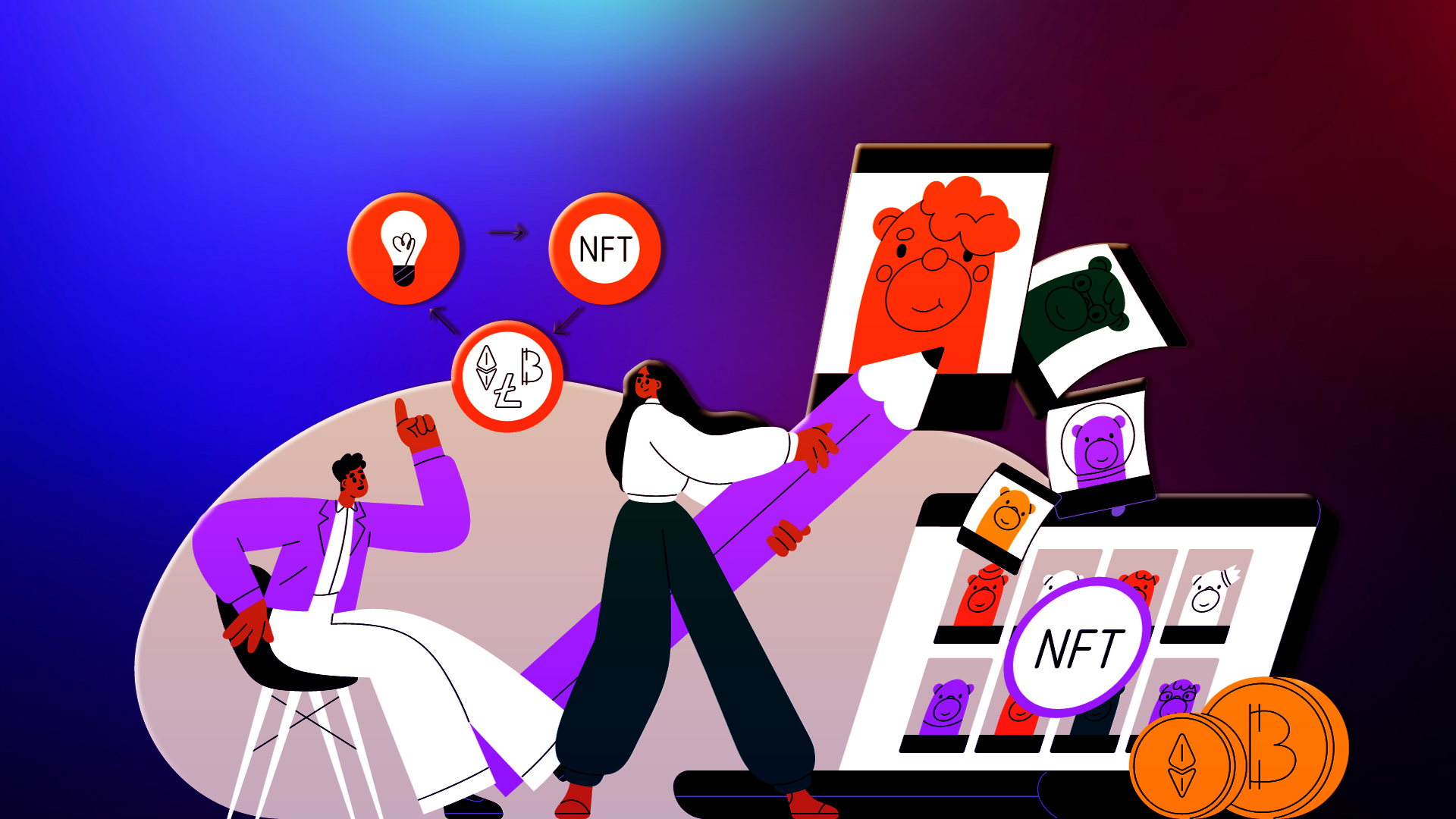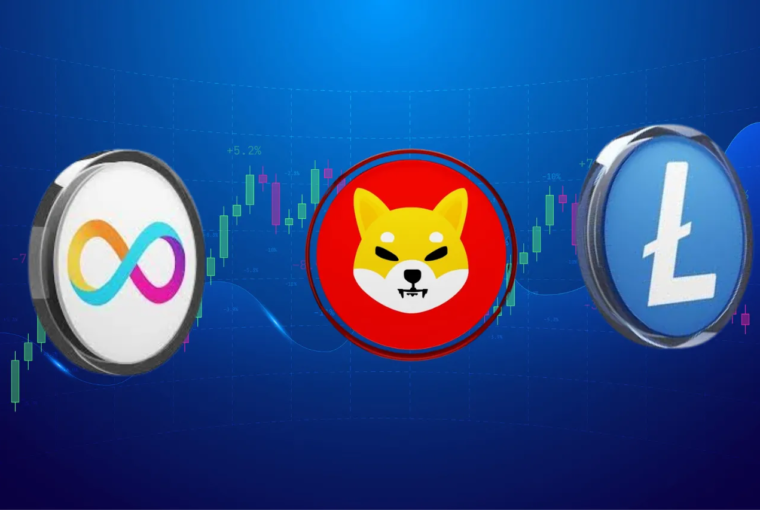- This article delves into the multidimensional world of NFTs (Non-Fungible tokens), highlighting their special attributes, the ways in which producers may use them, and the revolutionary changes they have brought about across several sectors.
- It offers thorough advice on minting NFTs, pricing tactics, branding, marketing, royalties, and the tokenization of digital services to artists, designers, and other creators.
Non-fungible tokens (NFTs) have become a transformational force in a world where technology and art coexist, altering the creative environment and redefining how designers and artists monetize their work. In this thorough tutorial, we’ll go over the special qualities of NFTs, how they operate, how they affect artists and other producers, as well as the larger effects of this digital revolution.
Understanding NFTs: A Digital Ownership Paradigm Shift
Digital ownership has undergone a paradigm shift thanks to NFTs, or Non-Fungible tokens. NFTs are exclusive and indivisible digital assets, in contrast to conventional cryptocurrencies like Bitcoin. Whether it’s the hues in a piece of art, the scarcity of a game item, or the specifics of a 3D model, each NFT has unique characteristics.
Blockchain technology, which keeps track of every NFT transaction and provides an irrefutable trail of ownership back to the original originator, protects these distinctive qualities. This provenance guarantees the authenticity and validity of digital goods, bringing a new level of confidence to the online world.
NFTs also bring the idea of uniqueness and scarcity into the digital realm. In order to increase the perceived worth of their NFTs and replicate the exclusivity associated with actual collectibles, creators might manufacture limited editions. NFTs are more desirable because of their scarcity, which attracts collectors and aficionados.
NFTs may be created on a variety of blockchain platforms, enabling interoperability and extending the reach of these digital assets. They are not limited to a single ecosystem. By allowing them to explicitly include particular rules and conditions, such as royalty systems for secondary sales, smart contract integration gives producers even more authority.
Multiple Uses and Community Involvement
NFTs break through conventional barriers and are useful in a variety of fields, such as virtual worlds, gaming, music, domain names, and even virtual real estate. This adaptability creates new opportunities for producers across a range of industries to tokenize and monetize their work using NFTs. In the NFT ecosystem, the psychology of collecting is important since customers want to own distinct digital artifacts. NFT communities encourage engagement, enabling creators to communicate directly with their audience and forging closer links than usual.
Producing Useful Digital Assets
Creators need to add originality and creativity to their digital assets if they want to succeed in the cutthroat NFT market. Since paying attention to detail may considerably increase the perceived worth of an NFT, quality craftsmanship is essential. A digital asset gains depth and emotional resonance by incorporating a narrative or tale, which also makes it more compelling to customers.
Limited edition printing can increase rarity, and cross-disciplinary cooperation can result in innovative and distinctive digital products. NFT enthusiasts frequently choose works that question conventions and explore methods or ideas. A personal connection with potential customers is fostered by incorporating emotions into the design process, and personalized branding provides an extra degree of distinctiveness.
Making Creations Into Tokens Via Minting NFTs
Making indivisible tokens on the blockchain out of one-of-a-kind digital creations is the process of minting NFTs. This process establishes the foundation for admission into the NFT market by confirming ownership and authenticating validity. Important steps in the minting process include picking the best blockchain platform, creating a digital wallet, creating precise metadata, and incorporating smart contracts. Its exposure and reach may be increased by advertising the newly issued NFT skillfully and navigating gas prices wisely.
Methods for Listing and Pricing NFTs
To maximize profits and entice potential customers in the NFT market, effective pricing and listing tactics are essential. Making compelling titles and descriptions, enhancing visual appeal, highlighting social validation, timing and strategic promotion, adaptability to feedback, and continuous learning are some strategies. Other strategies include conducting market analysis, analyzing the asset, using tiered pricing, testing flexibility, using psychological pricing tactics, incorporating secondary sales royalties, and evoking auction dynamics.
Marketing and Brand Building
The success of NFT inventions depends on developing a distinctive brand identity and implementing a comprehensive marketing strategy. Determining the brand identity, creating a memorable brand name and logo, creating a cohesive portfolio, utilizing social media, participating in online communities, creating content, forming collaborations, sending out effective emails, participating in virtual showcases and events, analyzing and adapting strategically, and embracing continuous learning are all tactics for building a brand.
Additional Sales and Royalties
NFT authors can gain from royalties, which provide them the opportunity to make money every time their NFT is transferred in future transactions. Both artists and collectors gain from the NFT’s long-term appreciation, which promotes a mutually advantageous connection between them.
Digital Services and Expertise Tokenization
NFTs can symbolize digital services and knowledge in addition to art and antiques. Creators have new opportunities to monetize their expertise and knowledge by tokenizing customized advice, training materials, specialized solutions, and other digital products.
Conclusion
The world of NFTs is a vibrant convergence of enterprise, creativity, and technology. The entire potential of this digital revolution may be unlocked by artists, designers, and producers by embracing the distinctive characteristics of NFTs and using efficient solutions. NFTs provide new opportunities for ownership, monetization, and creative expression; they are not merely a fleeting trend; they are transforming businesses and professions. NFTs will likely continue to contribute significantly to the realm of digital invention and innovation as more individuals become aware of their significance and how to use them effectively.


